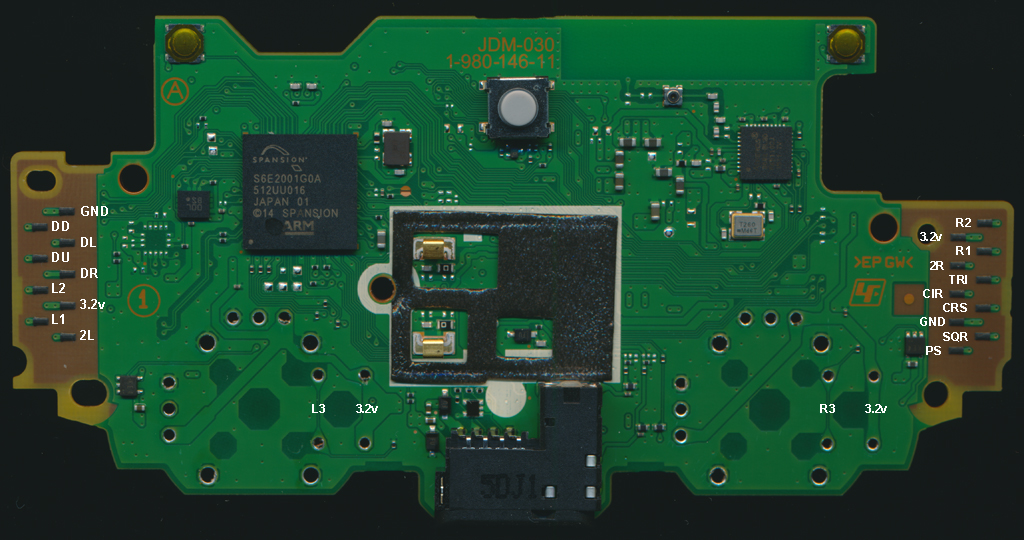The PCB is multi-layer, at least 4 of them on that one, stacked in there like layers of a cake. Typically you'd have Top, Inner 1, Inner 2, then Bottom for a 4 layer board. When you see a via that goes from the Top or Bottom to nowhere on the other side, it's connecting something on the Top or Bottom to an inner layer. If you see a via that has no connection on either side, it's connecting something in the Inner layers together, aka Inner 1 to Inner 2.
There's only 3 ways to know for sure where the traces all run to, one of them will never happen and the other 2 destroy the board in the process.
1 - Get the schematic from Sony. Never going to happen.
2 - Strip the board of almost every component and spend countless, tedious hours probing around it with a meter to see what goes where. Not practical and the number of points you'd have to check would be beyond ridiculous for a human to do by hand, and even if you did manage to start that task, the board would be poked to death near the end of it and likely have some damage that caused false readings, to say nothing of the spots you would miss just being human.
3 - Strip the board of every single component and then scan the PCB, then remove the solder mask and scan it again, then the fun part, strip the top and bottom layers and then yep, scan it again. Then you can virtually trace every single spot from start to end. This also takes countless, tedious hours, but gets you an exact layout of the board, for that version of controller anyway. I did this with a JDM-055, don't recommend it, but it works.
Corrosion could do it, but I'd imagine there would be other signs of corrosion on the board as well as it causing several other issues, but again, weirder things have happened. The odds of something getting under the BGA and shorting those 2 lines together and nothing else are kind of astronomical.
Has this controller ever worked correctly? If that's an unknown, then it could be it's had the issue since it was made and there was an etching problem with that board and those lines are connected somewhere on/in the PCB. You can try checking the Resistance from X to /\ and see what it is, then check from X or /\ to other buttons and see if there are any glaring differences. If you prob onto the black contacts you'll get some Resistance from them, and you don't want to go stabbing those all up anyway, so try to prob just back form them on the actual trace.
Also try the same test on the Daughter board to make sure some short between the X and /\ isn't hiding in plain sight there.
